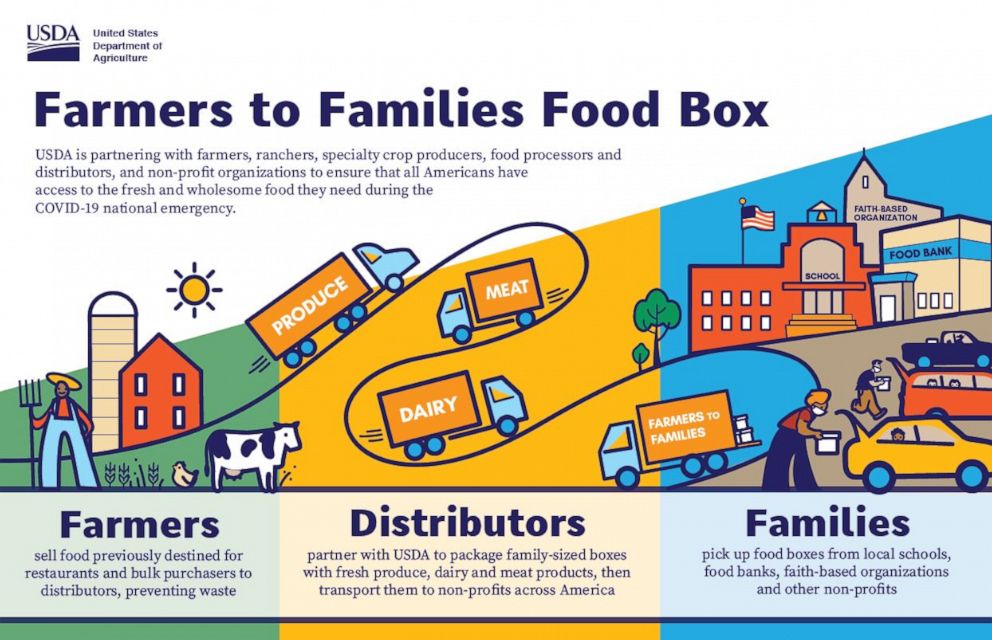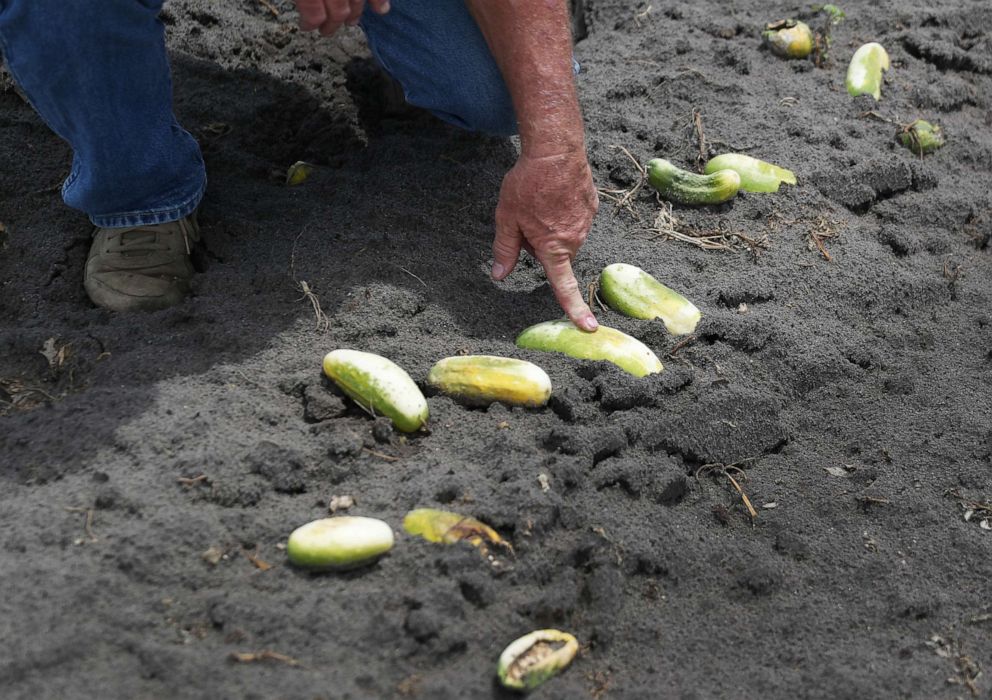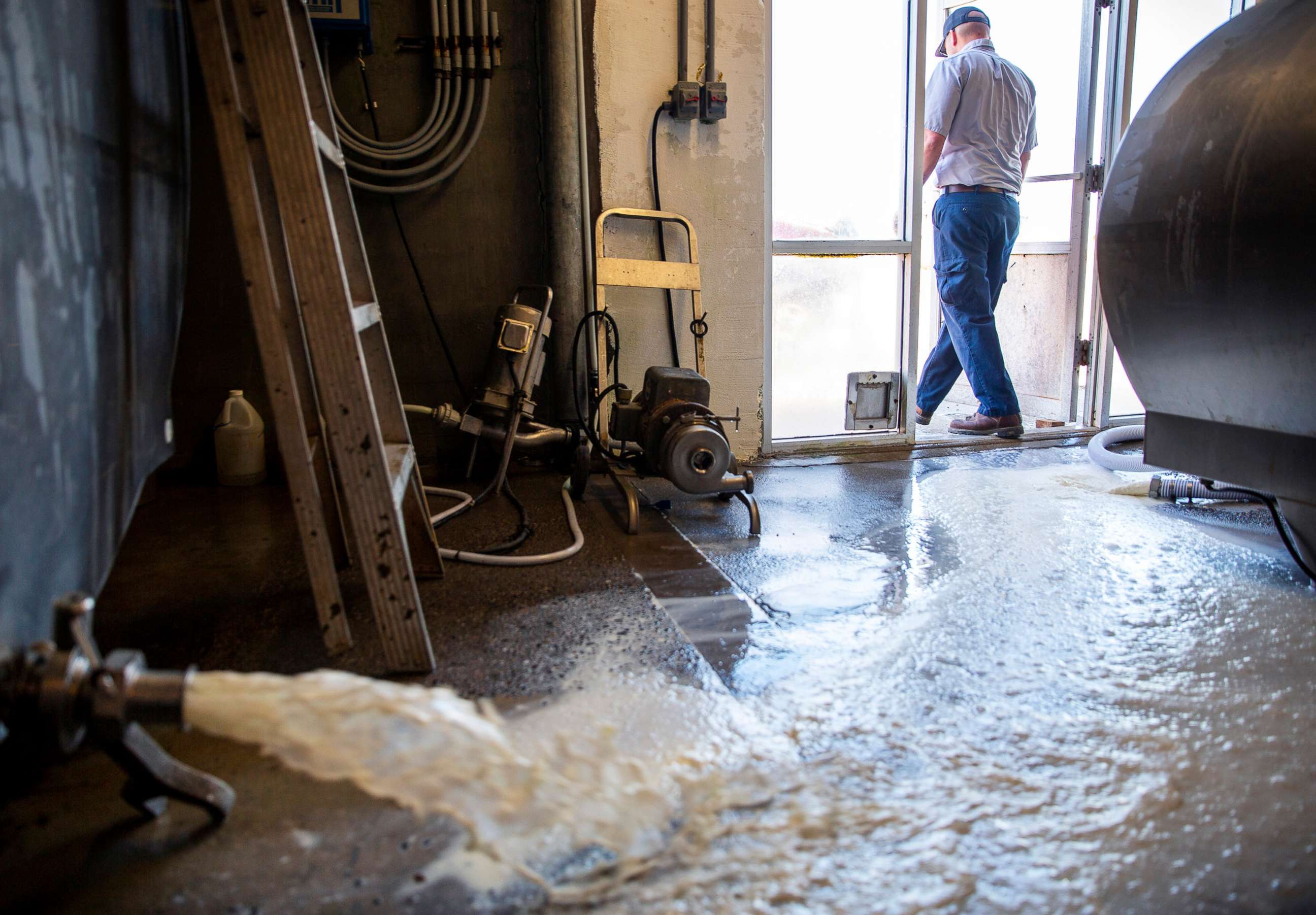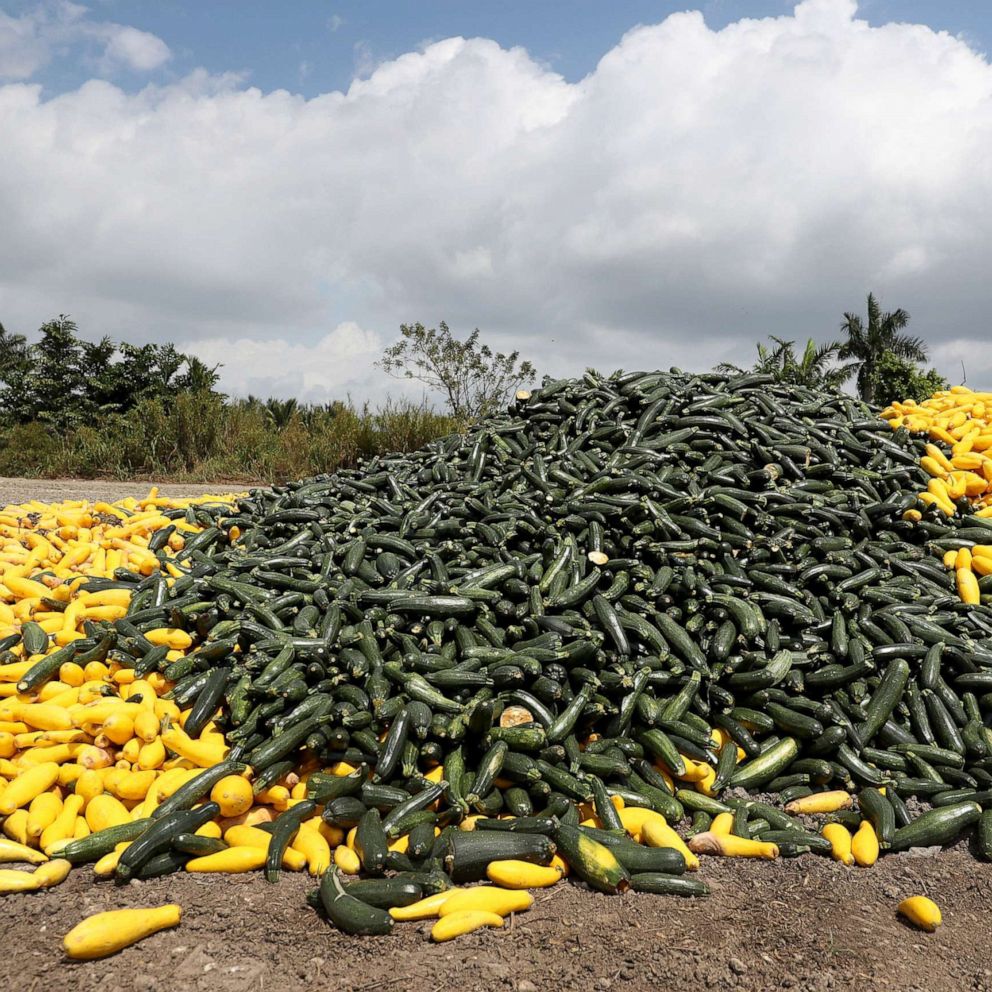USDA wants to help farmers feed families, but advocates and lawmakers say it's not enough
Experts say the country needs a stronger safety net for families in need.
One of the most confounding consequences of the COVID-19 pandemic continues to be the problem of farmers bulldozing or dumping their crops at the same time as thousands of Americans line up at food banks dealing with a shortage of supplies.
With everyday Americans unable to keep up with demand despite organizing fundraising drives or collections to send trucks of wasted produce or milk where it is needed most, the largest groups representing farmers and food banks are asking for federal help. They have now called on the U.S. Department of Agriculture to scale up efforts to the national level.
Lawmakers called on the USDA to provide "bold and innovative" solutions Friday to address the harm to farmers and the confusion over why food is being discarded while other Americans need help feeding their families.
No one knows how much food has been lost nationwide since restaurants, schools, hotels and other businesses have closed and stopped buying food in bulk, but farmers have reported dumping milk, plowing under vegetables and facing the possibility of euthanizing livestock if they can't take animals to meat processing plants.
The USDA wants to address that issue with a new "farmers to families" program that will use federal money to pay farmers to box up and distribute their own product to food banks. Similar to a community-supported agriculture (CSA) box you might pick up from a local farm or farmers market, the donation will include fruits and vegetables, dairy products, cooked poultry or pork, or some combination of the three, and be provided to food banks at no cost.

Agriculture Secretary Sonny Perdue said the program has the potential to address one of the reasons the pandemic has been so disruptive to the food supply chain, that big national producers and distributors can't easily shift from delivering entire trucks of product to providing food in a way that's accessible to consumers and doesn't add work for food banks to repackage it.
"This program will not only provide direct financial relief to our farmers and ranchers," Perdue told reporters in April. "Mr. President, it will allow for the purchase and distribution of our agricultural abundance in this country to help our fellow Americans in need."
The USDA is accelerating the process to decide which farmers will get part of the $3 billion available from the program. Submissions for contracts were due Friday and the agency said it would start granting them in time for the first food box deliveries on May 15. A USDA spokesperson said they received "an abundance of interest" in the program.
"Farmers to families" could be an experiment in a new model of agriculture that addresses the disruptions of the current emergency, but lawmakers, experts and advocates also warn that spending federal money to buy and donate food won't solve all the ripple effects from the pandemic.
Michigan Sen. Debbie Stabenow, the top Democrat on the Senate Agriculture Committee, wrote to Perdue on Friday asking that the USDA prioritize options for the program that will reduce food waste and allow producers and food banks to be flexible in adapting contracts to provide a variety of seasonal products.
Elizabeth Balkan, director of the food waste, food and agriculture program at the Natural Resources Defense Council, said that even though disruptions from the pandemic brought attention to the increased waste of products from farms, it's a longstanding issue that the current system hasn't fixed.
"Even in the best of times there's enormous amounts of food waste happening upstream at the point of production or the farm level," she said, citing estimates that billions of pounds of produce can go unharvested or unsold every year.
"The reason why we're in this mess is because there's so many intermediary points and excess food and it's hard for excess food to get to the people in need in a straightforward manner," Balkan said.

Balkan said she's still concerned prefilled boxes won't stop all food from being wasted if producers aren't matched up with organizations to distribute the food or if the contents of the boxes don't match the foods families need. But she said the pandemic has made people appreciate the people that produce our food and that it could fuel a push for policies that help reduce food waste.
Miguel Gomez, an assistant professor at Cornell University who researches the food supply chain and distribution, said the program could show if our food system can adapt to entirely new ways of packaging and distributing fresh food that's ready to go to market on a larger scale and address some of the weaknesses the current crisis has highlighted.
"I think these type of programs have the opportunity to develop the business as trustees and the supply chain expertise for businesses to really make good money innovating input distribution. It is a way, also, to diversify our food supply chain structure," he told ABC News.
Gomez said one of the challenges in the current system is that big farming operations supply large retailers while small local farms can sell directly or via farmers markets, but there are fewer outlets for midsize producers and distributors that could be more flexible, affordable and resilient to change. While the food from this program will go to food banks where there's the most need, Gomez said it could also change the food market for consumers as more families look for places to buy food directly if they're scared or unable to go to grocery stores.
"I think it will be very interesting to see the ability or power of our food system to repurpose all that food that is there," he said.
A nonprofit, Feeding America, anticipates 17.1 million people could face difficulty affording food as a result of the pandemic, in addition to the 37 million people who were considered food insecure before the crisis.
But advocates, including Feeding America, are concerned that when the national emergency is over, donations and government programs established during the pandemic could slow down even though the economy and families impacted financially will take years to recover.
The Trump administration's previous policies on food assistance programs and other parts of the social safety net emphasized getting Americans back to work, citing the growing economy and low rate of unemployment. But with the economic downturn from the pandemic expected to last, advocates are pushing the administration and Congress to start expanding the social safety net as part of starting the recovery.

The USDA said it has increased spending on SNAP benefits by 40% during the pandemic through state waivers to allow recipients to be automatically bumped up to the maximum benefit, provide school meals that can be picked up at home and deliver cash assistance to families in need.
Joel Berg, CEO of Hunger Free America, said that while food banks need support and are playing a vital role in the pandemic, their role can't compare to the long-term impact of federal spending.
"The truth is in best of times, they are less than one-tenth of the dollar amount of the federal nutrition assistance safety net," he told ABC News.
He said the efforts to expand nutrition programs during the emergency might not be helping the people with the most desperate need, the lowest-income households that already receive the maximum amount of benefits or families that can't get to schools or food banks to collect meals and groceries.

Experts also say that providing families more money through programs like SNAP is better for the local economy because families spend their benefits at local grocery stores and spend the money they would otherwise use on food for other necessities.
Berg said anti-hunger advocates have been pushing for a 15% increase in SNAP benefits in the next coronavirus response bill. Democrats, like House Appropriations Committee Chair Rosa DeLauro, said they want the USDA to support that increase as well as possible programs to expand food distribution and support organizations like World Central Kitchen, which has been providing money to restaurants to prepare and donate meals using their existing staff.
Katie Fitzgerald, executive vice president and COO of Feeding America, said that while food banks have more stock on hand because of government programs to buy excess food, they can't sustain the push to help millions of Americans in need on donations alone.
"This is a problem that our food bank system, however strong and capable it is, is not able to solve on its own," she told ABC News in April.
"It requires a massive government solution, through the various federal nutrition programs, TFAP (The Emergency Food Assistance Program), other than child nutrition programs, and it has to include a SNAP solution."







